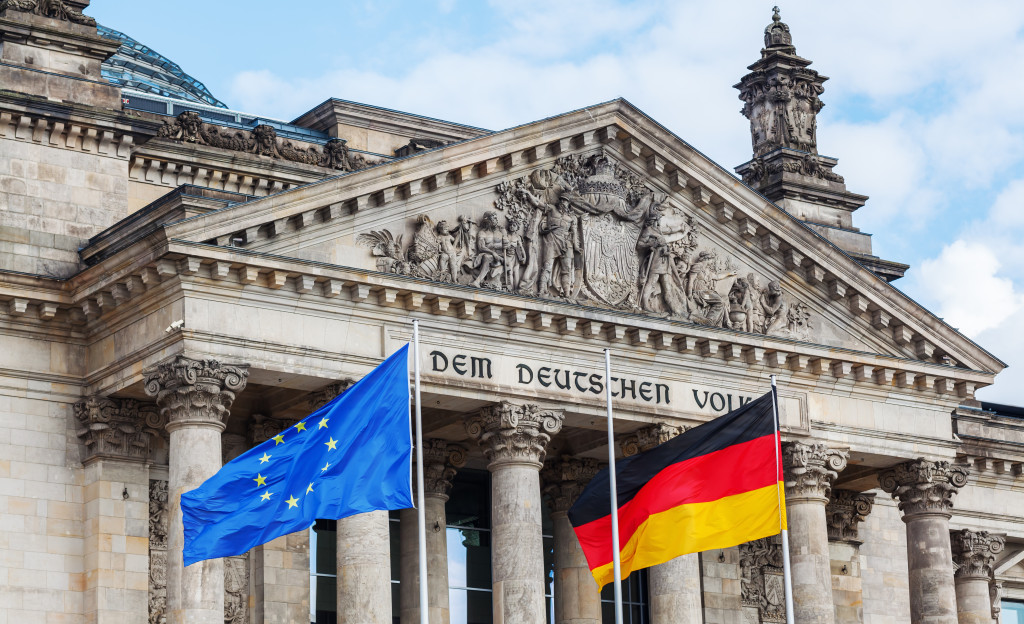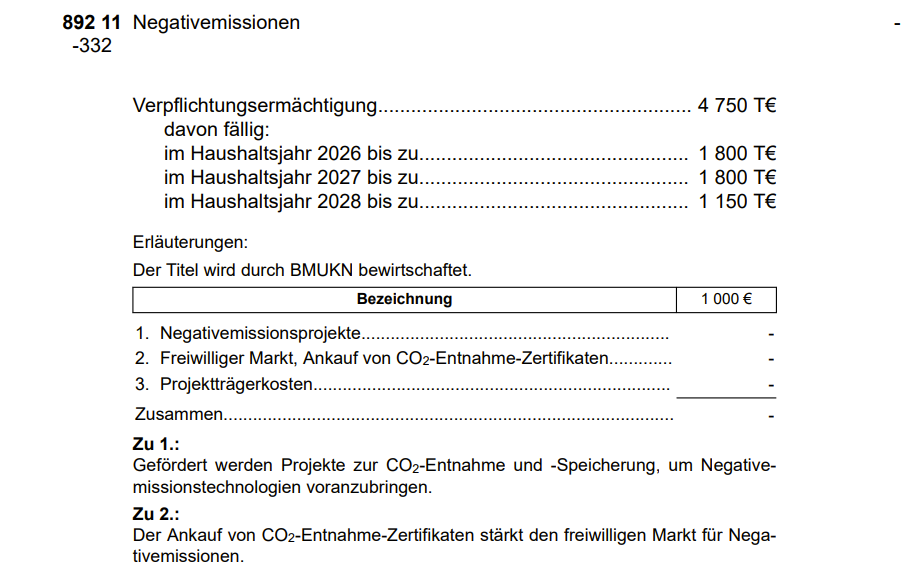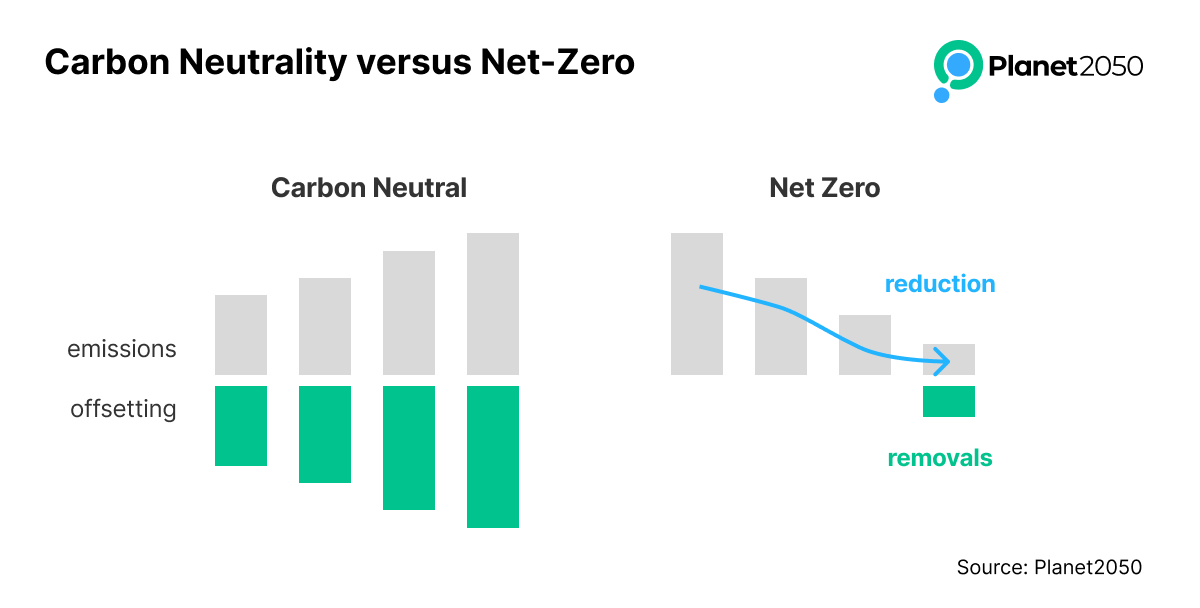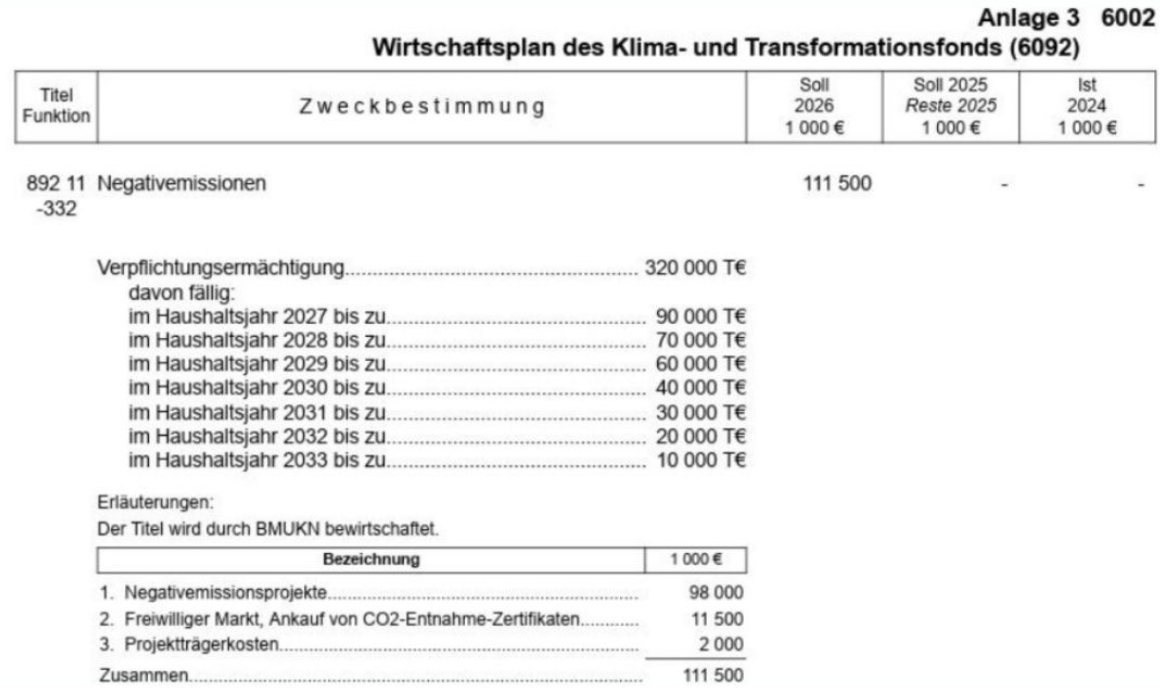Reading Time: 8min

Germany's Leadership: €476 million for Carbon Dioxide Removals (CDR)
Other "puzzle pieces" in Germany's Carbon Removal strategy
Carbon markets clearly on a growth trajectory
The year 2025 marks a crucial turning point: Carbon markets are unequivocally moving into institutionalized and regulated territory.
Germany has recently made bold moves to accelerate its transition and support the growth of the Carbon Removal industry adding new puzzle pieces to its strategy.
At Planet2050, we see this not only as an absolutely necessary political development, but also as a great opportunity for future-proof climate investments.
In April 2025, Germany’s new coalition published its treaty signaling alignment on 2040 targets and use of carbon credits, which we had covered here.
The draft Federal Budget 2025 already included the procurement from the German government of voluntary Carbon Removal certificates for an amount of €4.75 million for 2025, indicating a willingness to continue and increase the strategy in the upcoming years.

This has now been confirmed on July 30, 2025 when the German Cabinet approved Minister Lars Klingbeil's 2026 draft budget.
The budget proposition now includes total planned investments of over €476 million for technology-driven climate projects able to permanently capture and store Carbon Dioxide.
Final approval is anticipated by the end of the year after reviews and validations at the Bundestag and Bundesrat.
This underscores Germany's recognition that, alongside deep emission cuts, the active removal of greenhouse gases from the atmosphere is essential to achieve its ambitious climate targets of carbon neutrality by 2045.
The key context to this decision is Germany’s commitment to Net-Zero which was set in 2019 in the Federal Climate Change Act (Bundes-Klimaschutzgesetz – KSG), and amended in 2021 to include with legally binding targets.
"Net-Zero" refers to a state where the amount of greenhouse gases (GHGs) being released into the atmosphere is balanced by the amount being removed from it.
This is different from Carbon Neutrality whereby emissions can increase as long as they are “offsetted”.

In a Net-Zero scenario, emission reduction needs to be prioritized. For Germany, it will require a lot of efforts in key polluting sectors such as transportation, construction, agriculture, industry or energy:
However it will not be possible to eliminate all emissions. Residual ones have to be neutralized by an equivalent amount of Carbon Dioxide Removals (CDR).
The Climate Act planned by it by setting specific GHG removal targets for the land use, land use change and forestry (LULUCF) sector:
at least 25 million tonnes CO2eq are to be removed annually by 2030
at least 35 million tonnes CO2e by 2040
at least 40 million tonnes CO2e by 2045.
Technology based-solutions will also need to be used to reach the target, which is supported by the new Coalition. However the types and amounts are unclear, as they are part of the Long-term Negative Emission strategy (LNe, see 5/).
Published in early 2024, the Carbon Management Strategy is the immediate roadmap for dealing with what are known as "hard-to-abate" or "unavoidable" emissions.
The CMS primarily focuses on using Carbon Capture and Storage (CCS) and Carbon Capture and Utilization (CCU) technologies to address emissions from specific sectors like cement, lime, waste incineration, and certain parts of the chemical industry.
The CMS will aim to create a legal framework for Carbon Capture and Storage (CCS) by permitting offshore CO₂ storage, allowing federal states to opt-in for onshore storage, outlining state funding for these technologies, and planning for a CO₂ transport infrastructure.
Germany's new government had agreed on March 2025 to a landmark €100 billion investment, which will be channeled into the existing Climate and Transformation Fund (KTF) over the next 12 years.
This special, debt-financed fund is intended to provide a stable financial basis for major climate-related projects.
While detailed spending plans are still being finalized, the fund is expected to support a wide range of initiatives, including investments in Carbon Capture and Storage (CCS) and Carbon Dioxide Removal (CDR) technologies, which are seen as critical for the decarbonization of hard-to-abate industries.
The KTF's budget comes from revenues from the EU and national emissions trading systems, and from the new special fund that was created by a temporary suspension of Germany's "debt brake" rules.
The fund typically invests in key areas such as the decarbonization of industry, the expansion of renewable energy and electric mobility, and the improvement of building energy efficiency.
The 2026 Federal budget now indicates that the German government plans to invest €476 million directly CO₂ removal technologies over the next eight years, including through the procurement of Carbon Removal certificates traded in voluntary markets:

The planned investments demonstrate a robust commitment by the government to build and promote a thriving CO₂ removal sector in Germany.
How the money will be used:
The planned investment reveals a clear strategic approach.
111 million Euros are earmarked for 2026, including:
98 million Euros for specific CO₂ removal certificate projects (research and development).
11.5 million Euros for public procurement measures (direct purchase of negative emission units to stimulate market demand).
2 million Euros for administration and monitoring (efficient use of funds).
An additional €365 million:
planned for 2027 to 2033, with a structured annual budget (e.g., €90 million in 2027, gradually reducing to €12 million in 2033)
This sustained funding ensures long-term stability and investment security in the CO₂ removal certificate sector.
An additional 45 million Euros:
specifically allocated for soil carbon projects in 2026
this shows a clear commitment to nature-based solutions that opens up further investment avenues.
(Note: These figures are from a draft.. Official confirmation from the Federal government is still pending till late 2025).
The coalition explicitly supports the integration of CO₂ removal certificates into the EU Emissions Trading System (ETS) - a subject we will break down in an upcoming article.
The German government's commitment extends beyond direct funding.
Germany's government has also announced that the Ministry for the Environment (BMUV) will now have a dedicated sub-department for Carbon Dioxide Removal (CDR), a first for the country which makes sense given the investments planned.
The government is also prioritizing regulated carbon markets, creating a new emissions trading department.
The responsibility for Carbon Capture and Storage (CCS) has been placed under the Ministry of Economic Affairs (BMWE), and its future management is still being decided.
Germany is also preparing a Long-term Negative Emissions strategy (LNe).
It will look beyond the CMS and its immediate goal of neutralizing hard-to-abate emissions and focus on achieving net-negative emissions after 2050.
The strategy will consider both natural and technological methods for carbon removal:
Natural Sinks: measures to strengthen and expand natural carbon sinks, such as restoring forests and rewetting peatlands, which naturally absorb CO₂.
Technological Sinks: targets for technical solutions like Bioenergy with Carbon Capture and Storage (BECCS) and Direct Air Capture with Storage (DACCS).
Germany is seeing a significant and growing ecosystem of support for Carbon Dioxide Removal (CDR), driven by government policy, new industry associations, and an active research community.
The German Association for Negative Emissions (DVNE) for example has played a central role in shaping these developments.
Their campaigns for increased funding and the government's direct purchase of CO₂ removal certificates are clearly bearing fruit.
This bold Federal Budget commitment confirms the role of Germany as a pioneer in the European climate movement and in scaling carbon removals.
Germany is investing significant financial resources in climate policy and positioning CO₂ removal certificates as a key driver for achieving net-zero targets.
"This development is extremely exciting scientifically and commercially. This is where the companies and markets of the future are emerging, and with them attractive investment opportunities for private investors who want to benefit from this aspiring sector", says Lucas Zaehringer, CEO of Planet2050.
Planet2050 provides early capital to Carbon Removal project developers in exchange for future carbon credits — using a combination of instruments of equity investment, carbon streaming agreements and forward contracts.
Through upfront financing, technical expertise, and close engagement with project developers, Planet2050 is building a high-quality portfolio — and a new infrastructure for the climate economy.
Monitoring policy and market development is key to Planet2050, in order to ensure our investment decisions are future-proof and aligned with the trend of institutionalization of the nascent carbon removal market.
For investors, this creates exposure to a new climate-linked asset class with long-term growth potential.
Planet2050 plans to make these investments accessible beyond traditional private finance, to a wider public, through an upcoming public listing in Europe.
Learn more at https://planet2050.earth/investors
The was Part #1 of our four-part EU Carbon PolicySeries. Stay tuned for upcoming ones.
You can also subscribe to Planet2050 at https://planet2050.earth/newsletter.